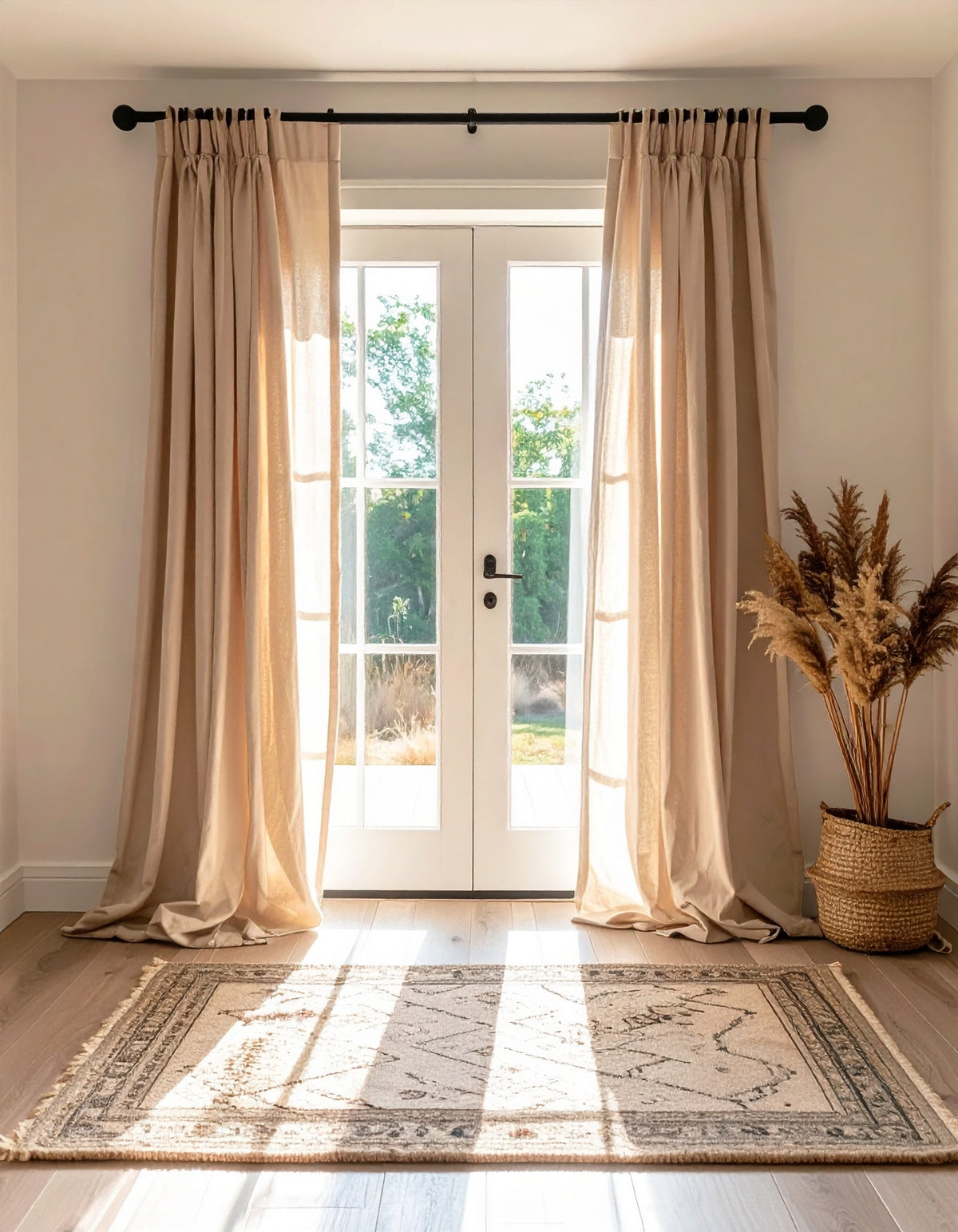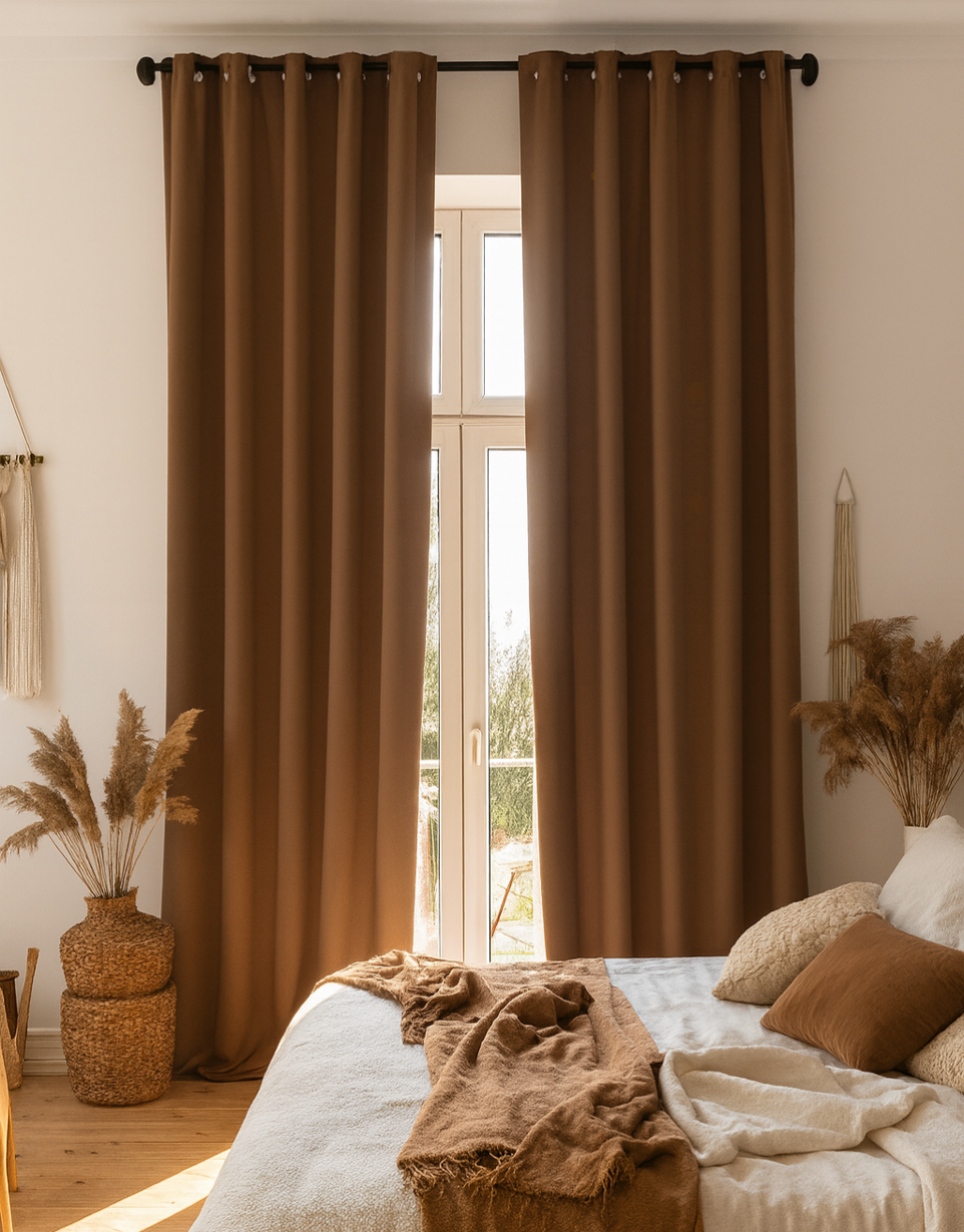Windows frame the way we experience our homes. The coverings we choose, whether curtains, drapes or blinds, shape the look of a room as well as how it feels throughout the day. Here’s a simple guide to understanding the differences between different window coverings, so you can find the right fit for your space.
Curtains
Curtains are the most familiar and versatile choice of all. They are usually made of lighter fabrics such as cotton, linen or blends that let the light gently filter through. Their softness makes a room feel open and welcoming, and depending on the material, they can create anything from an airy glow to a cozier, more private atmosphere. They tend to fall to the windowsill or floor, and their versatility makes them just as suited for a bedroom as for a cozy living room. Another beauty of curtains is the variety of styles to choose from. With so many styles, fabric and color variations, curtains give you the freedom to customize a room in a way that feels entirely your own.
Curtains offer flexibility also in length. Shorter ones are more casual, especially in kitchens or smaller rooms, while full-length curtains add elegance and can even make ceilings feel higher. If you want the best of both worlds, layering, for example a sheer panel with a thicker curtain over it, lets you shift between light and shade as your day unfolds.

Drapes
Drapes, at first glance, might look like curtains, but they have a different presence. They are often made with heavier fabrics, lined for fullness and designed to reach from ceiling to floor. Drapes are for drama and elegance but they also block out light more effectively, which is why they are ideal for bedrooms where darkness brings rest, or living rooms where coziness is important.
Beyond atmosphere, drapes can also add practical comfort. Thermal-lined versions help insulate a room, keeping warmth in during winter and protecting against strong summer sun. And from a design perspective, their rich fabrics and generous length feels refined and elegant.

Blinds
Blinds work a bit differently than the other two. Instead of fabric, they use slats made from wood, faux wood, aluminum or other composites that tilt to control both light and privacy. This structure makes them particularly practical in spaces where flexibility and maintenance matter, such as kitchens, bathrooms or home offices. Unlike curtains or drapes, blinds don’t flow, but their clean lines and adjustability give them a modern simplicity that many homes might need. It’s true that they don’t bring the same softness as fabric, but they offer clean lines and precise control over brightness.
The choice of material plays an important role here too. Wood blinds add warmth and texture to living spaces, while moisture-resistant options like faux wood or vinyl are reliable companions in bathrooms or kitchens. Blinds alone can create a sleek look, but you can also pair them with curtains to soften the edges and add depth to the room’s design.

How to Decide
The first step is always to think about what you want the room to feel like. Do you imagine mornings filled with gentle light? Curtains might be your answer. Do you prefer a space that feels cocooned, calm and private? Drapes will serve you well. Or do you prefer a space where you can shift light and shade with precision throughout the day? Blinds will give you that control. There’s no single “right” option, only the one that matches your daily rhythms and the atmosphere you wish to create in your home.









2 comments
dgno2g
dgno2g